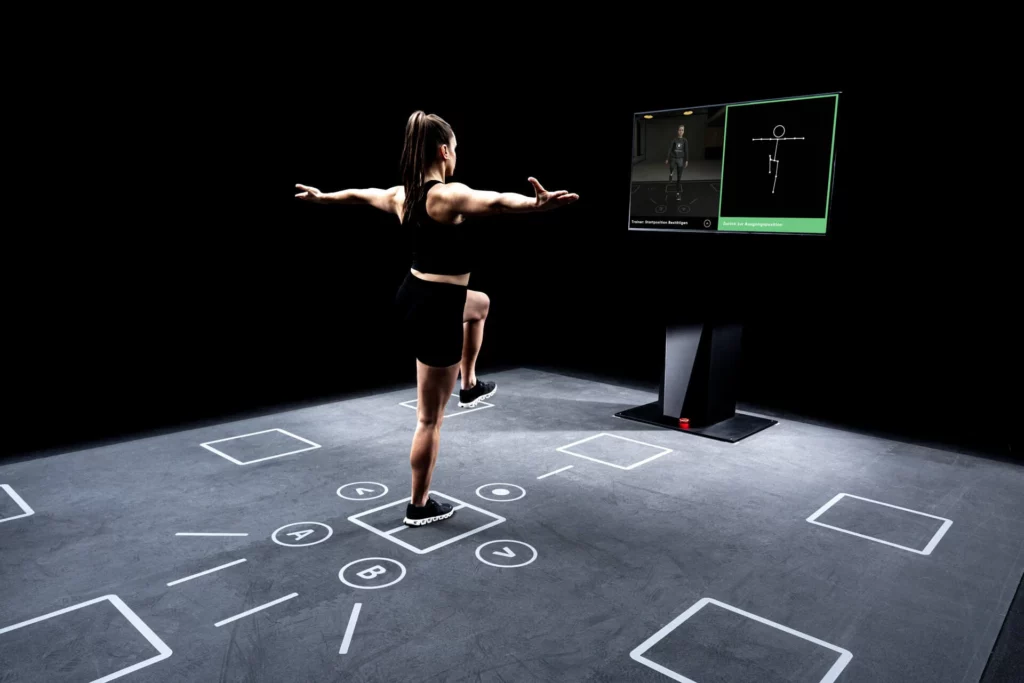The use of data in a medical context has undergone a revolutionary change in recent years, particularly in elite sports, which has enabled significant progress. However, despite these successes, the use of data by the general public still faces various challenges. What are the advantages and what are the obstacles to data-driven work in practice?
Top sport as a pioneer
The systematic collection of medical data has become indispensable, especially in top-class sport. There are many reasons why data-driven work and access to relevant information for therapy and training are also of great value for other patient groups and non-elite athletes.
Data collection and analysis in a medical context is crucial as it forms the basis for improving diagnoses, treatments and services. In elite sport, data has long been indispensable for optimizing athletes’ performance, preventing injuries and increasing success. There are multiple reasons for that:
Individual care
Data allows individual strengths and weaknesses to be identified, enabling tailored training and therapy plans. In addition, with a patient-centered approach, information about the patient’s visual, cognitive and motor abilities plays an important role in assessing treatment progress, identifying causes and preventing new injuries. In addition, factors such as nutrition, sleep and psychological aspects play a crucial role.
Injury prevention
Through continuous data collection, injury risk factors can be identified and avoided at an early stage. For example, it is now known that deficits in visual and cognitive abilities can increase the risk of injury due to delayed hazard recognition, increased mechanical loading to compensate for deficits, and ineffective feed-forward processes.
Rehabilitation
Data plays a crucial role in assessing the status quo and analyzing treatment progress. Functions that a patient has to relearn during rehabilitation are recorded both qualitatively and quantitatively. The more valid and reliable data is available, the better the resulting decisions about the next treatment steps will be. It’s not just about the sheer amount of data from one area, such as motor skills, but rather about a holistic picture of the patient.
Performance
Data analysis helps athletes maximize their performance by identifying and improving weak areas. Especially in sports in which athleticism, chance and changing situations play a major role, such as ball sports, martial arts and racket sports. However, the underlying skills that determine the success of an action are often overlooked. Without knowledge of visual, cognitive and motor skills (VIKOMOTORIK®), a systematic, targeted and, above all, individual training process is difficult to implement.

Why the use of data for the general public has often failed in the past
Despite progress in top-class sport, the transfer into everyday practice and training facilities often lagged behind. This was often due to various factors:
Costs and effort
Collecting and analyzing medical data often required expensive technology and expertise that was not accessible to everyone. Today, affordable software and hardware is available for both elite sports and smaller facilities as new technologies such as lidar, AI and cameras have become more affordable. Since then, sports, military and commercial professionals have used the same systems and principles. The large amount of data from the general public also benefits elite sport.
Lack of data integration
Data is often stored in isolated silos. In addition, in the past there were only a few systems in use in many facilities, especially in elite sports. And if so, then they came from different manufacturers. As a result, neither the data nor the insights from the collected data could be incorporated into the daily operations of commercial providers.
Significance for the future of modern practices
Ultimately, with today’s technologies, processes and knowledge from elite sport, it is possible for any exercise and training facility to work. This will lead to ever better diagnostics as well as optimized and safe therapy planning and implementation, as progress depends on the abilities and actual performance of the individual and not on standardized plans. Importantly, this does not place an additional burden on staff in medical facilities, but rather streamlines work processes. This transfer from sport to everyday life benefits patients, therapists and entrepreneurs.
Conclusion
In the medical context, systematic data collection and data-driven work are indispensable. While elite sport is already benefiting from data collection, hurdles had to be overcome for the general population. These barriers have been partially overcome through the use of SKILLCOURTS, making technology and software from elite sport accessible to therapists and trainers. This means that patients benefit from all the advantages of individual and evidence-based training therapy. This approach can significantly improve the quality of life and health of many people. In addition, therapists and trainers have more opportunities to use their specialist knowledge efficiently, and practices and training centers not only improve their attractiveness on the job market, but also their financial situation.



